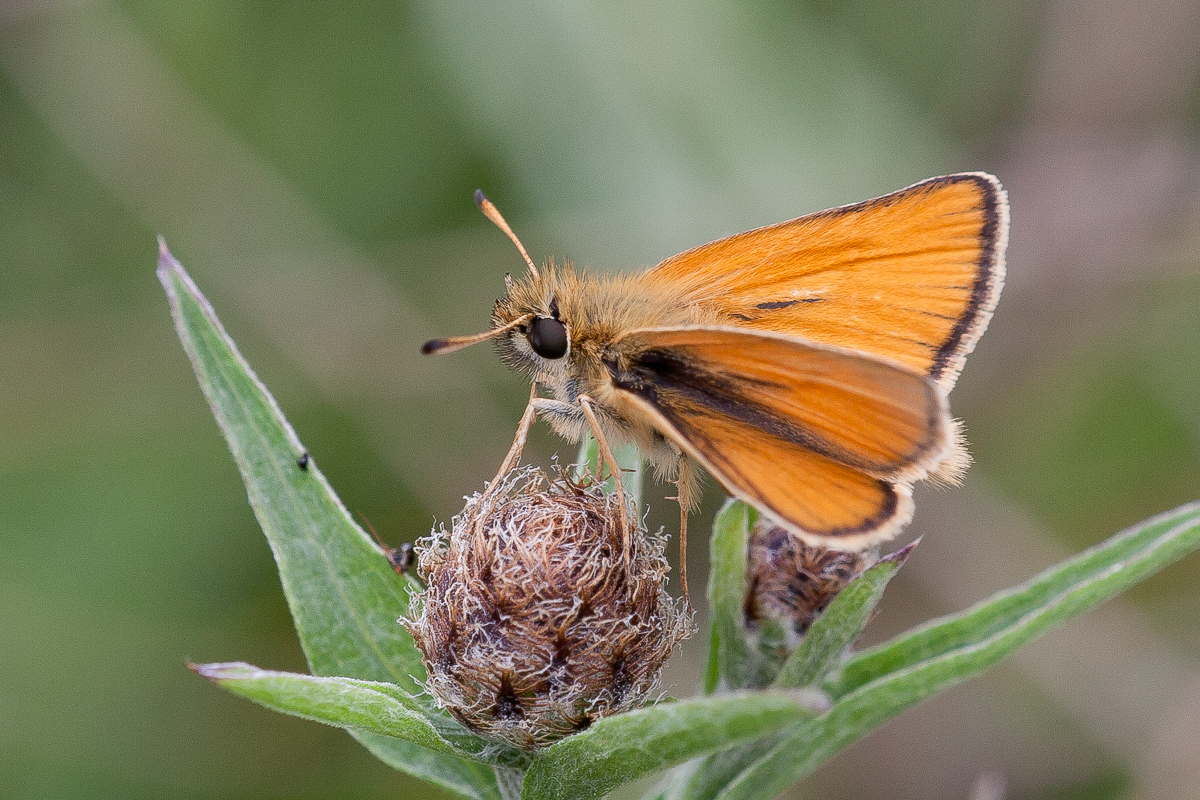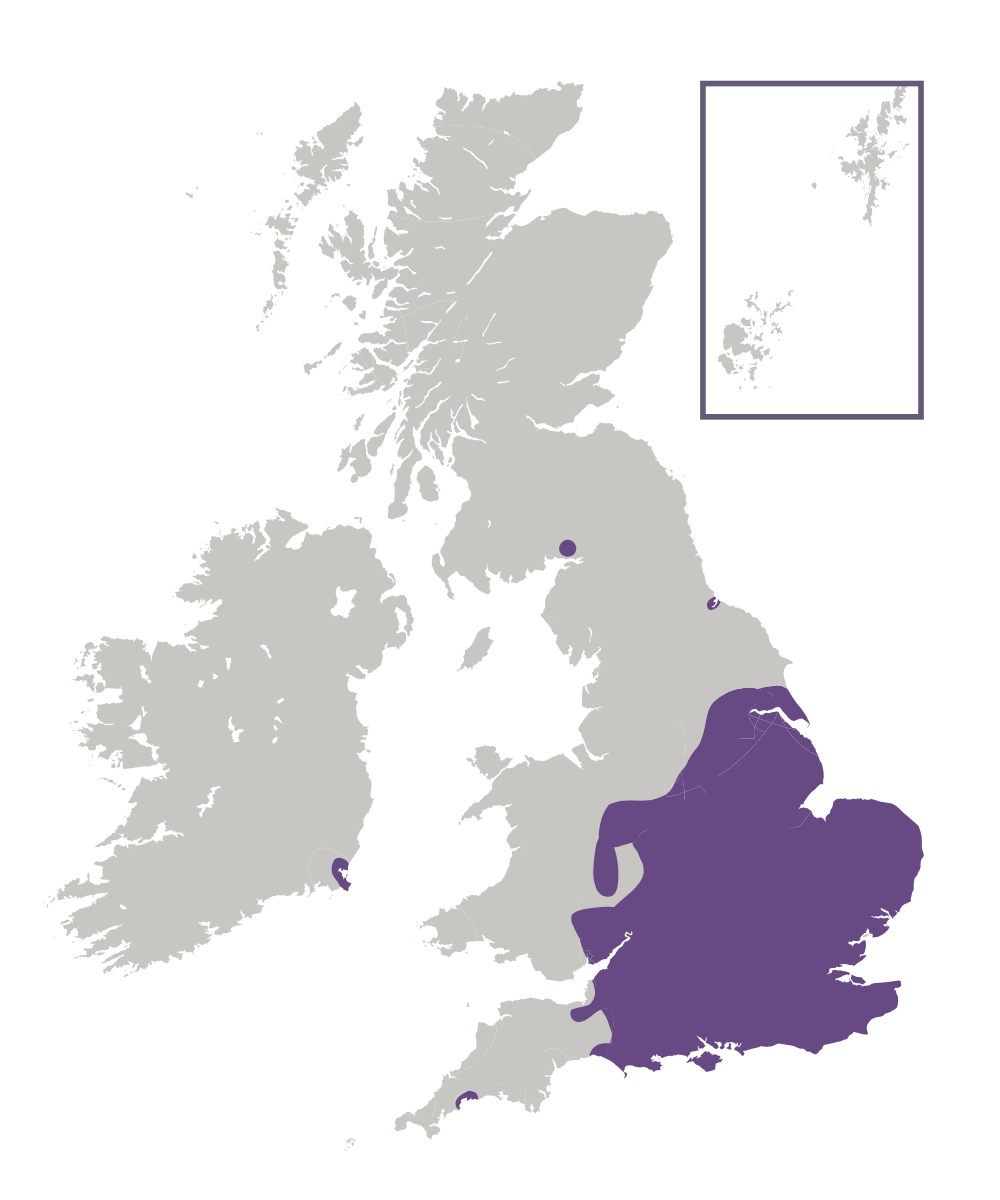
Photo © Peter Eeles
The Essex Skipper forms discrete colonies that vary from a small number of individuals to several thousand. Where it occurs it can therefore be very common. This species is very similar in appearance to the Small Skipper and, because of this similarity, was not recognised as a separate species until 1889. The male is distinguished from the female by the sex brand on its forewings, which is a short line of specialised scent scales. Despite its name, the Essex Skipper is now found over much of the southern half of England and it was first recorded in Wales in 2000 and in Wexford in south-east Ireland in 2006. On the British mainland it is to generally be found south of a line between Dorset and North Lincolnshire. It is believed that the increase in distribution is being assisted by the steep and grass-covered embankments that are often found on motorways and major trunk roads which acted as corridors - allowing this species to reach new locations more easily.
The male is the more active of the two sexes, and is territorial, unlike the female which is more sedentary. When egg-laying, females exhibit the same behaviour as the Small Skipper. Specifically, the female will alight on a dead stem of Cock's-foot, and then move backwards down the stem, probing the sheath as she moves. When a suitable opening in the furled sheath is found, she will lay several eggs inside. The female of the Essex Skipper selects tighter leaf sheaths in which to lay eggs than the Small Skipper, which may explain a difference in primary foodplant. The loose sheaths of Yorkshire-fog are avoided, the female preferring other grasses, such as Cock's-foot or Creeping Soft-grass, whose sheaths are tighter. Both sexes are nectar-loving, and can be found visiting flowers such as Thistles and Red Clover.

This species is found in rough grassland, including road verges, woodland rides, chalk grassland and embankments.
Adults feed primarily on thistles (Carduus spp. and Cirsium spp.). clovers (Trifolium spp.), Common Fleabane (Pulicaria dysenterica), heathers (Calluna and Erica spp.), ragworts (Jacobaea spp.) and Wild Marjoram (Origanum vulgare) are also used.
The primary larval foodplant is Cock's-foot (Dactylis glomerata). Common Couch (Elymus repens), Creeping Soft-grass (Holcus mollis), False Brome (Brachypodium sylvaticum), Meadow Foxtail (Alopecurus pratensis), Timothy (Phleum pratense) and Tor-grass (Brachypodium rupestre) are also used.
